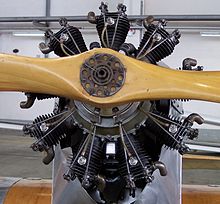Fieseler F 4
| Fieseler F 4 | |
|---|---|

|
|
| Type: | Sports and touring aircraft |
| Design country: | |
| Manufacturer: | |
| First flight: |
May 1932 |
| Commissioning: |
1932 |
| Production time: |
1932 |
| Number of pieces: |
2 |
The Fieseler F 4 was developed, built and flown in as a two-seat sports and touring aircraft by Fieseler Flugzeugbau . Despite the good performance of the machine, Gerhard Fieseler was not satisfied and stopped the activities before the start of series production.
history
After the F 3 "Wasp" project had failed, Fieseler wanted to develop a normal sports aircraft in his company and bring it to market. An aircraft was to be created in which great importance was attached to safety, quality, economy and comfort. The new type was called the Fieseler F 4.
construction
In May 1932 the design office started work. The Fieseler F 4 was a two-seater, strained low-wing monoplane in composite construction designed. The fuselage was a tubular steel construction, the wings were made of wood. The fuselage, the wings and the rudders were completely covered with aircraft lines. The wings were connected to the fuselage via fittings on the front and rear spars and braced with profile wires at one point on the top of the fuselage and one on the underside of the chassis. The landing gear with balloon tires was attached to the front of the fuselage in order to reduce the risk of rollover during a hard landing. For reasons of operational safety, the fuel was supplied by a gravity tank, and the fuel lines were made of elastic material. To increase comfort, well-padded seats with foldable armrests were used, the rudder pedals were adjustable and the elevator could be trimmed on the fly. There was a luggage room behind the driver's seat and access to all vital parts was ensured.
The Argus As 16 with 35 hp was used as the drive . This was later replaced by the nine- cylinder Salmson AD 9 radial engine with 40 hp.
Flight characteristics
The aircraft was flown in at the end of August 1932. Gerhard Fieseler was very satisfied with the flight characteristics and the performance despite the weak engine. The set goals were confirmed by numerous measurement and test flights.
Launch
In October 1932, the company presented the Fieseler F 4 to the public at the German Air Sports Exhibition (DELA) in Berlin. The sales documents included the prices for the weaker Argus engine at 5,900 RM and for the Salmson engine at 6,300 RM specified. The feedback from experts and interested parties was consistently positive.
Despite the good market prospects, Gerhard Fieseler had doubts about the project's success. He wanted a sport aircraft that had performance and characteristics that none of the competitors could match. Fieseler stopped all flight attempts with the F 4 and the construction of further cells; he had already commissioned his designers to develop a new aircraft, the Fieseler F 5 .
Technical specifications
| Parameter | Data |
|---|---|
| crew | 1 |
| Passengers | 1 |
| length | 5.80 m |
| span | 9.50 m |
| height | 1.90 m |
| Wing area | 13.00 m² |
| payload | 235 kg |
| Empty mass | 240 kg |
| Takeoff mass | 475 kg |
| Cruising speed | 135 km / h |
| Top speed | 155 km / h |
| Landing speed | 55 km / h |
| Service ceiling | 4600 m |
| Range | approx. 500 km |
| Engine | Salmson AD 9, 40 HP (29 kW) |
See also
literature
- Gerhard Fieseler: My path in the sky. The builder of the Fieseler Storch and the V 1 tells his life . Bertelsmann, Munich 1979, ISBN 3-570-01192-5 (autobiography).
- Fieseler magazine. Born 1938, ZDB -ID 1293906-7 .
